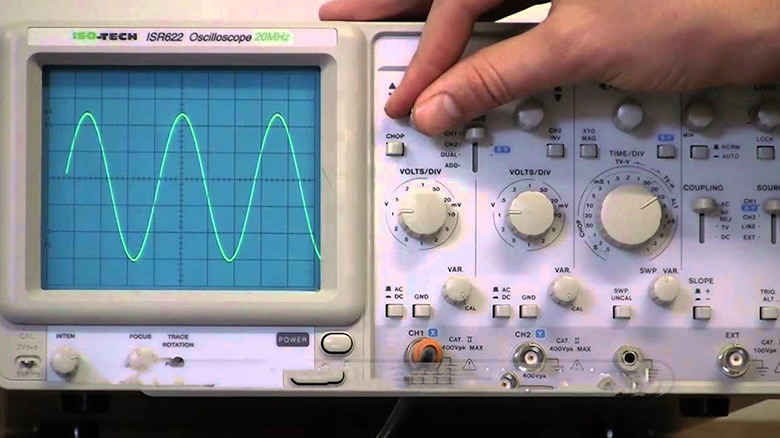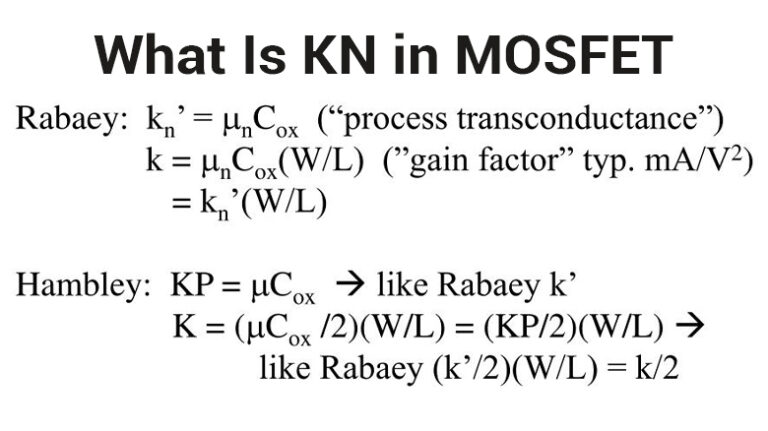How to Calculate Frequency From Oscilloscope?
Within the oscilloscope’s restrictions, an oscilloscope can be used to display the frequency waveform. With a time base setting of the scope and syncing the frequency peaks to the graticule of the scope screen, the frequency being measured is represented. The frequency can be calculated by monitoring the time between peaks.

How to Calculate Frequency From Oscilloscope – Figure It Out
A sine wave, for example, begins at 0 volts, rises to its peak, and then falls back to 0 volts. It then gets negative, reaches its negative peak, and then returns to zero. As the cycle restarts at this moment, the period is this total time. You can calculate the frequency by measuring the period.
Cycles per second are the frequency (or Hz). As a result, you derive F = 1/P, where P is the measured time. The time is measured in seconds. You could, for example, take a sine wave measurement. If it has a 20ms period from the oscilloscope, 1/20ms=50 cycles per second, or 50 Hz, is the frequency.
AC Frequency
Using the horizontal scale on your oscilloscope, you can easily measure time and AC frequency. When taking a frequency measurement, increasing the signal area on your oscilloscope display, making it broader so you can more easily translate the waveform – will assist ensure accuracy.
To begin, measure the time on your oscilloscope’s horizontal scale and count the number of horizontal divisions from one end of the wave to the other where it crosses the Centre Horizontal Graticule Line.
The signal’s period can then be calculated by multiplying the number of horizontal divisions by the time/division. Once you have this, you can calculate the frequency by dividing one by the time.
What Is Oscilloscope Frequency?
The number of waves that travel through a fixed spot in a given amount of time is referred to as frequency. It also refers to the number of cycles or vibrations a body in periodic motion goes through in one unit of time.
The bandwidth of an oscilloscope is defined as the frequency at which the detected signal’s amplitude declines by -3 dB. or drops to 70.7 percent of its actual value. The calculation is done for you on most digital oscilloscopes, so you can get a frequency measurement while measuring voltage.
Simply push a few buttons to see the frequency of the signal you’re looking at, as well as additional statistics like standard deviation and mean frequency. There are, however, techniques to calculate the frequency without using technology.
How Do I Figure Out Frequency?
The frequency of an event can be calculated by dividing the number of repetitions by the time it took for those repetitions to occur. To figure out the frequency of a waveform or any repetitive element, first, choose the course of action you want to use to determine the frequency.
Then choose the time span over which you’ll be measuring the frequency. To get the final result, divide the number of times an event occurs by the duration of time to find the frequency. On an oscilloscope, the calculation is already done for you. You just need to adjust some knobs as said and figure out the output or input frequency.
v
Automatic Measurements on a Digital Scope
As previously stated, most high-quality digital oscilloscopes will automatically take measurements, so you won’t have to do the math. Time measurements can be found on Tektronix oscilloscopes under the ‘measurements’ label on the display

How Does an Oscilloscope Measure Frequency? | Tektronix
This will provide you with an exact, real-time measurement of the frequency, which will change depending on the signal being broadcast. You have access to all statistical data as well. This allows you to observe the frequency’s standard deviation, mean, maximum, and minimum, giving you a clearer picture of how the signal is reacting.
Conclusion
Determining frequency has been easier due to the specifications of modern oscilloscopes. The basic concept is used, that is the frequency of a repeated occurrence can be easily calculated by counting the number of times it occurs within a given period and then dividing the count by the period’s length.


